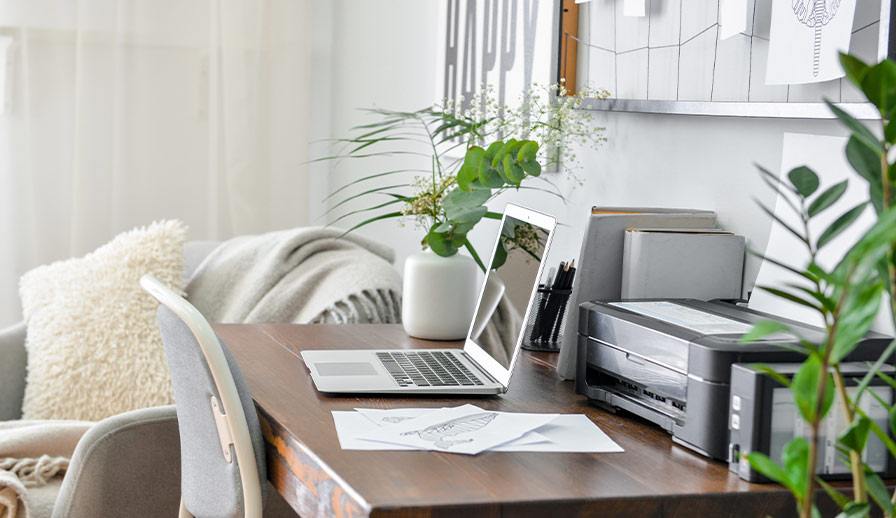Struggling to find content to share on your social media pages?
Stop scrolling through Instagram and Facebook. All you need is REALTOR.ca.
Our consumer lifestyle blog, Living Room, offers content including home improvement, market trends, DIY projects, neighbourhood guides and profiles on unique homes. Living Room publishes exciting new content four times a week (with unique French content for our Francophone fans).
While CREA Café is curated specifically to help your business grow and thrive, Living Room content is perfect to share with your clients.
Owned and operated by the Canadian Real Estate Association (CREA), REALTOR.ca is the No. 1 real estate platform in Canada (Comscore, 2020) with MLS® System listings from across the country.
Share this blog with your clients and follow REALTOR.ca on Twitter, Instagram and Pinterest.
You can read the original blog here.

The COVID-19 pandemic has forced millions of Canadians to take their work from the office building to their personal residence. While some people have made their way back to the office, the mass workplace transition from the cubicle to the kitchen table could become permanent for many companies who embrace the benefits of working from home.
If you work in a profession that requires you to meet and consult with clients, you may want to consider integrating client-friendly elements into your at-home office that can help make the space inviting and more functional for visitors.
Rebecca Hay, President and Principal Designer of Rebecca Hay Designs, walks us through some tips for transforming part of your home into a client-facing office.
Make a memorable first impression
First impressions can make a difference, which is why the location and functionality of your client-facing at-home office is paramount.
If you’re having clients come to your property, Hay says it’s important to pay attention to the transition spaces in your home, such as the entryway or hallway your visitor must travel through to get to your office.
“If you’re entertaining clients in your office space, the closer you are to the front door, the better,” said Hay. “What I’ve seen [as] a trend with new construction, is a lot of new builds are doing offices at the front of the house.”
Having an office at the front of the home offers many benefits. According to Hay, offices near the front door allow you to see who’s coming and going, easily collect packages, and enjoy access to natural light.
Dividing your client-facing office from the rest of the home is also an important part of minimizing noise and interruptions. Adding a door to your workspace to block out sounds and situating your office in a part of the home that doesn’t look out onto busy areas—such as the kitchen—can cut down on distractions. In an optimal situation where space permits, you could also make your client office completely separate from your home, such as in a converted garage or backyard studio.
“It’s always nice for the person working there to have an escape from their home so it feels like there’s a bit of separation,” said Hay. “And that way, if you have a guest or a client coming to your office, they don’t have to go through your personal space.”
If you’re making space for an office clients can visit on your property, Hay says you’ll also want to ensure you can provide bathroom facilities close by for them to use.
“You want to make sure that if someone is coming to visit you and they need to use the facilities, you want that to be a reflection of your design aesthetic and you want it to look professional,” explained Hay. “And so I would say if you have a powder room on the main floor that clients are definitely going to be using, you probably want to update that as well.”

Practice good office design etiquette
Having an office at home to meet with clients allows you to customize and personalize your workspace to your tastes, but there are still a few basic principles to follow.
In some of Hay’s recent office design work, clients have frequently requested their workspace look flattering on video calls, which can be achieved by providing adequate lighting and interesting visuals like wallpaper, plants, bookshelves, and custom millwork. If you’re having visitors to your home office, the incorporation of light plays an important role in making the space appear more welcoming.
“If you don’t have natural light, you can use layers of light, so overhead lighting, a table lamp or a floor lamp, or sconce lights. That’s really important to make it inviting for the people who are coming,” said Hay.
“If you’re going to have a client in and you’re going to be sitting for a long meeting, you want to make sure the area or the chair or the sofa they’re sitting in is comfortable for them,” she added.
When clients pay a visit to your home office, you may want to include design elements that showcase who you are and your profession. But Hay explains it’s important to strike a balance between a home office that’s overly personal and one that’s cold and sterile. Instead of family photos, Hay recommends opting for art pieces or images from your travels. You could also add interesting accessories like trophies or hobby-related items that express your interests.
Don’t forget to provide space for office necessities in your at-home workspace as well. Hay says she always likes to include filing cabinet storage, such as in a custom built-in, where files can be safely stowed away. While office life is pretty digital these days, you may want to make room for a printer tucked behind doors too.

Remember to check for local bylaws and required permits
In addition to the design aspects of having an at-home, client-facing office, it’s also crucial to do your homework on the permitting and insurance side of things.
According to the Business Development Bank of Canada (BDC), if your business opens an office or performs functions that could disrupt your residential neighbours, you may need a municipal business licence to operate. For example, if you live in the City of Vancouver, you may be required to obtain a home-based business licence. You should also take time to research your municipality’s local zoning and property bylaws regarding home-based businesses, which will provide more information including the types of businesses legally permitted to operate in a residential property. Certain professions, such as those under the Law Society of Ontario, may also present their specific best practices for operating professional services from home.
If your business does certain activities, has employees, or makes a certain amount of money, you may be required to register your business with your respective province or the Canada Revenue Agency (CRA). If you’re running a business from home that clients visit, you may also want to explore your options with home-based business insurance to protect your assets and property from liability or damage.
If you’re thinking about investing in a renovation for a home office, you might be able to deduct some of the expenses from your taxes. Hay explained some of her past clients have written off a portion of their mortgage as an expense for their business, and have had elements of the office renovation work billed through their company.




